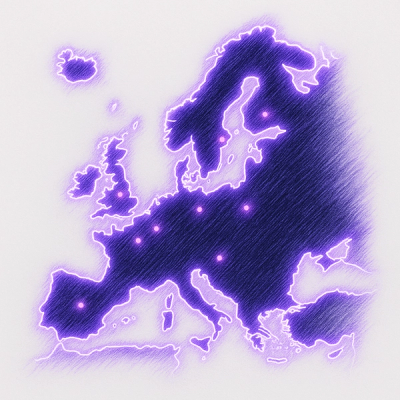ngx-halo

This Library is part of the NGXUI ecosystem.
View all available components at https://ngxui.com
@omnedia/ngx-halo is an Angular library that creates a beautiful, animated halo effect. This component provides a circular, gradient-based effect with smooth animations and interactive mouse tracking. It's perfect for enhancing the visual experience of your Angular applications.
Features
- Animated halo circle with a customizable gradient effect.
- Interactive mouse movement support for dynamic effects.
- Control animation, halo size, colors, and shadows through simple inputs.
- Supports flexible positioning and CSS customization.
Installation
Install the library using npm:
npm install @omnedia/ngx-halo
Usage
Import the NgxHaloComponent in your Angular module or component:
import { NgxHaloComponent } from '@omnedia/ngx-halo';
@Component({
...
imports: [NgxHaloComponent],
...
})
Use the component in your template:
<om-halo [animate]="true" [interactive]="true" [position]="'center'" [haloSize]="'300px'" [haloColors]="'#ff0000, #00ff00, #0000ff'" [haloShadow]="'0 0 80px rgba(0,0,0,0.5)'">
<h1>Your Content Here</h1>
</om-halo>
How It Works
- Interactive Mouse Movement: The halo responds to mouse movements with smooth, delayed transitions.
- Animation Control: Control whether the halo animates on its own or stops while interacting using the
animate input.
- Customizable Appearance: The halo's size, colors, and shadow can be controlled via dedicated inputs (
haloSize, haloColors, and haloShadow).
- Positioning: Set the initial position of the halo with the
position input.
- Styling: The component allows custom CSS styling via the
styleClass input.
API
<om-halo
[animate]="animate"
[interactive]="interactive"
[position]="position"
[haloSize]="haloSize"
[haloColors]="haloColors"
[haloShadow]="haloShadow"
styleClass="custom-halo-class"
>
<ng-content></ng-content>
</om-halo>
Inputs:
animate (optional): A boolean to control if the halo is animated by default. Defaults to true.interactive (optional): A boolean to enable or disable mouse interaction. Defaults to true.position (optional): Sets the halo's initial position. Accepts values like 'center', 'top-left', 'bottom-right', etc.haloSize (optional): A string defining the halo's size (e.g., '300px').haloColors (optional): A string representing the gradient colors for the halo effect. Default '#5fffda 20%, #46a8ff 50%, #cc32f6 100%'.haloShadow (optional): A string defining the halo's box shadow. Default '-60px -60px 100px rgba(234, 255, 95, 0.8), 0 0 80px rgba(244, 173, 108, 0.5), 60px 60px 120px rgba(225, 71, 181, 0.6)'.styleClass (optional): A custom CSS class for additional styling.
Example
<om-halo [animate]="true" [interactive]="true" position="top-right" haloSize="400px" haloColors="'#f00, #0f0, #00f'" haloShadow="'0 0 100px rgba(0,0,0,0.8)'" styleClass="custom-halo-style">
<div class="inner-content">
<h2>Welcome to the Halo Effect</h2>
</div>
</om-halo>
Styling
.om-halo
The .om-halo container allows you to apply global or custom styles using the styleClass input. The component manages the gradient and animation, while you can extend the styling for the container itself.
Example of Global and Custom Styling
<om-halo styleClass="custom-halo-background">
<div class="inner-content">
<h2>Custom Halo Styling Example</h2>
</div>
</om-halo>
.custom-halo-background {
background-color: #1e1e1e;
padding: 2rem;
border-radius: 10px;
}
.inner-content {
text-align: center;
color: white;
}
Contributing
Contributions are welcome! Please submit a pull request or open an issue to discuss new features or bug fixes.
License
This project is licensed under the MIT License.




